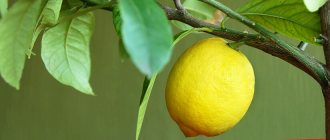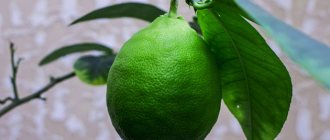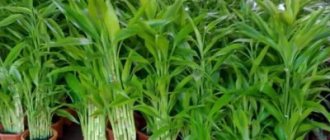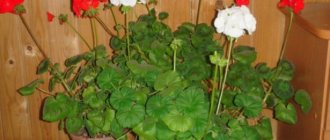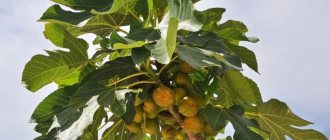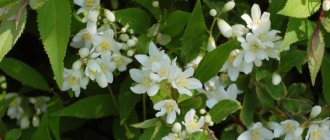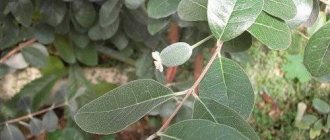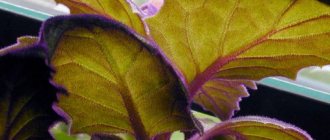Many professional and amateur flower growers believe that there must be a decorative lemon tree in a room or on a personal plot. There are many reasons for this: the plant has an aesthetic appearance, purifies the air in the room and brings good luck, judging by folk signs.
How to plant with a seed?
The seeded lemon tree adapts perfectly to indoor conditions. It is hardier than a plant planted by cuttings. It is best to plant at the end of winter, beginning of spring.
The procedure will require several manipulations:
- First you need to get 8-10 seeds, then soak them in cold water for 24 hours.
- Then collect soil in a pot with drainage holes and plant the seeds.
- It is better to make the soil yourself. Sand, humus, earth, charcoal are suitable for this. We deepen the seed by 2-3 cm. Water constantly and do not let the soil dry out. Sprouts should appear in 3-4 weeks.
To understand how to grow a lemon tree, you need to know not only the rules for caring for it, but also what containers it feels good in.
It is best if the pot is breathable, for example, pottery. But then the plant will need to be watered much more often, because the container dries out quickly.
Transfer
The plant is replanted in early spring or late autumn.
It is important that the surface of the substrate is 2 cm below the edges of the pot, and that the root collar is level with the ground. The day before the event, water the tree generously.
We recommend reading:
- Flowers for a flower bed blooming all summer until autumn: photo and name
- Fern and its types: characteristics, features and propagation tips
- Autumn flowers in the garden: photos and names
Place drainage at the bottom of the transplant container. Before the procedure, carefully examine the roots and remove blackened ones. Try to maintain com as much as possible.
Varieties of decorative lemon
There are many varieties of lemon you can grow at home. Each of them looks picturesque, some of them bear fruit, others fit perfectly into a small room and even on a windowsill.
Pavlova lemon
This variety was bred by breeders a hundred years ago. Its advantage is its unpretentiousness. The plant feels comfortable in low amounts of light and in dry indoor air. Even under these conditions, a lemon can grow up to two meters. Its crown has a pleasant rounded shape. With proper care, from the fourth year onwards, a healthy tree will be able to bear up to fifty small fruits.
Meyer
This variety first appeared in Russia in the 20s of the last century. Its spread throughout Europe was due to the rich harvest of those trees that were planted in open ground. The plant was obtained by crossing a lemon and an orange.
Chinese lemon
The Chinese lemon only grows up to one meter in height. At the same time, the plant bears fruit beautifully already in the third year of life. Flowers appear on both old and young shoots, while the fruits ripen quickly. It should be remembered that this variety does not grow well in the shade. Therefore, you need to grow lemon on the windowsills of the southern and southwestern parts of the house. During the dormant period, the tree needs to be kept cool, but the rest of the time it needs warmth and even heat.
Variety Yubileiny
This variety has a decorative effect as its main goal. At the same time, it is unpretentious and produces a harvest. The maximum height is one and a half meters. The attractiveness of the plant lies in its abundant flowering in its former color. Already in the second year you can get the first yellow lemons with thick skin.
Temperature and lighting
Considering that lemon is a southern plant, it loves brightness. But, it is important to remember that a young plant does not perceive direct sunlight. To form the crown beautifully, it must be constantly rotated.
An adult plant tolerates heat well. In summer, take the pot of lemon out into the yard/loggia. In winter, be sure to provide additional lighting. This is necessary so that the fruits of the lemon tree are sour, but not sour.
The air temperature, depending on the stage of life, should be within the following limits:
- active growth and flowering – within 17°C;
- beginning of fruiting – 20°C;
- rest – 14-17°C.
If you do not follow the temperature regime, the plant may get sick.
Top dressing
With proper care, the first fruits can appear within 2-3 years. To feed, you need to water the lemon with urea or saltpeter once a month.
We recommend reading:
- Flowers in August: photos and description
- Garden flowers that bloom in July: photos and names
Lilac - varieties, types, selection rules, planting nuances, cultivation secrets and care (105 photos and videos)
This is relevant for soil depleted in organic matter. Thanks to nitrogen, the plant will gain strength, leaves will fall, which means the winter will be lived easily.
Under no circumstances should you fertilize with microelements. The tree may die.
But you also need to be careful with nitrogen, because the tree will grow a powerful crown, and fruiting will disappear. Of course, if you need a decorative tree, then this option is just right.
Pavlovsk lemon: description and care at home
Watering mode
Lemon is sensitive to soil moisture in the pot. Drying out of the soil and excess moisture are the reasons for slowing growth, dropping leaves and stopping fruiting.
Water the tree 2-3 times weekly in summer, once a week is enough in winter. Changes in the frequency of humidification are associated with the characteristics of the room. The dryness of a clod of earth is determined by touch and the frequency of watering is adjusted. Moisten the soil abundantly. Rainwater is ideal. They use water from the pond. Tap water must settle.
Important! Do not allow liquid to stagnate at the bottom of the container, otherwise the roots are at risk of phytodiseases and rotting.
Top dressing
The introduction of nutrients into the flowerpot begins 6 months after transplanting into new soil. Deficiency is indicated by pale and curled tips of leaf blades.
Diluted horse manure in a ratio of 1:15 is effective for homemade lemon. In urban conditions, complex fertilizers are used for citrus plants. They are characterized by accessibility, safety and ease of use. The dosage is calculated based on the recommendations on the packaging.
